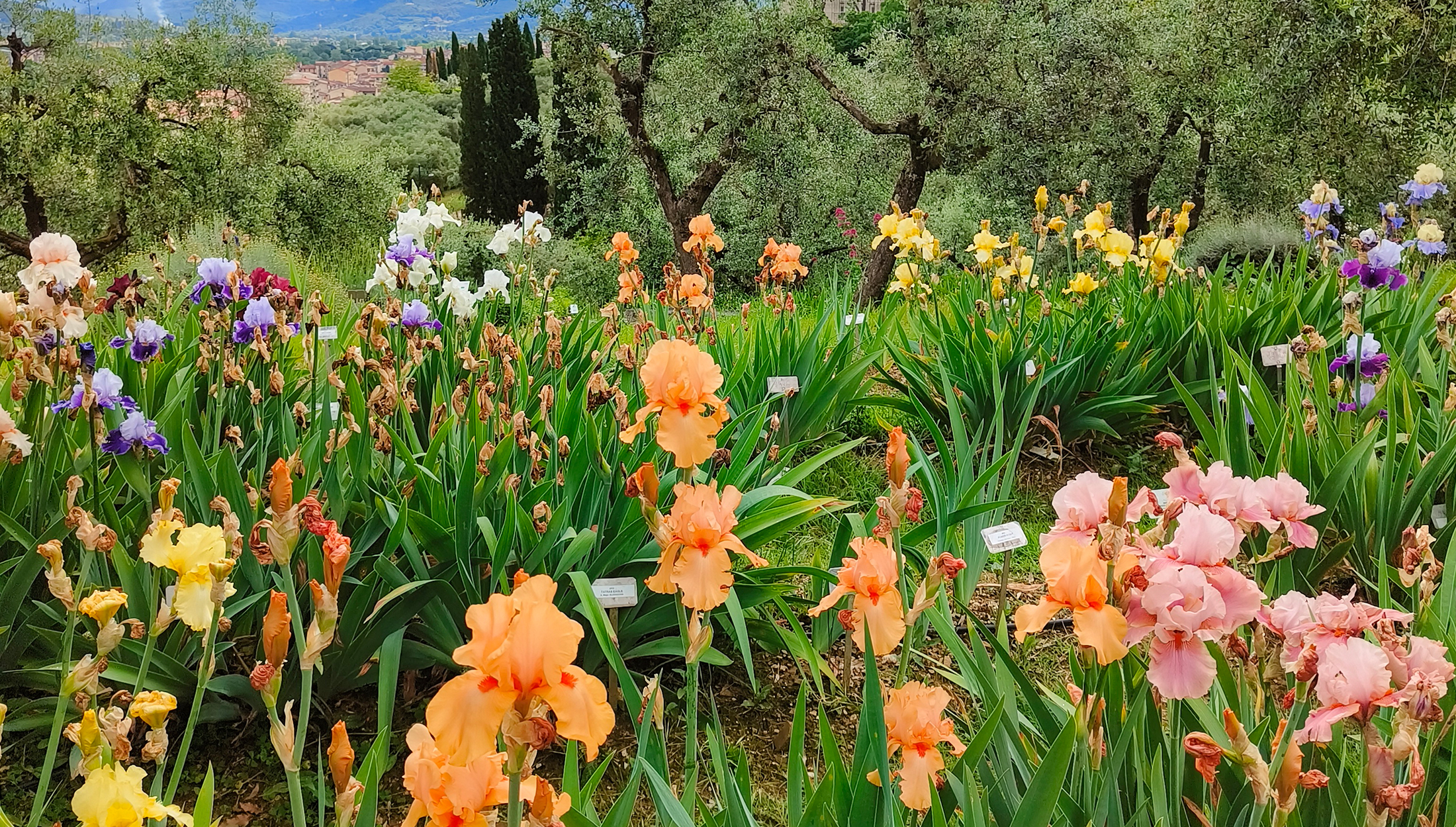Mattie O’Callaghan, Horticultural Trainee, visits the Florence Iris Festival:
I woke to the fluttering sounds of moths flying in from the Tuscan river under a spring moonlight through our window. I jumped up with a start, fearful of them tangling in my hair, and switched the light on. There was no sign of them. I was shocked and confused until my partner pointed out it must be the pillows which reverberate when you rest your head on them; it sounds just like wings beating through the air.
Drawn to the city of Florence by its masterpieces which I didn’t understand, to the lure of finding solace and peace in black coffee, tongues I couldn’t speak in, creamy bowls of pasta, and notebooks full of ideas. What struck me though was how unexpected the swirling, ever-changing ecology of Florence was. How wildness found itself swimming with us as we navigated small streets on rental bikes and felt our tightly lipped London bodies unfurl with paint dripping down canvas and irises buds unfolding in springtime.
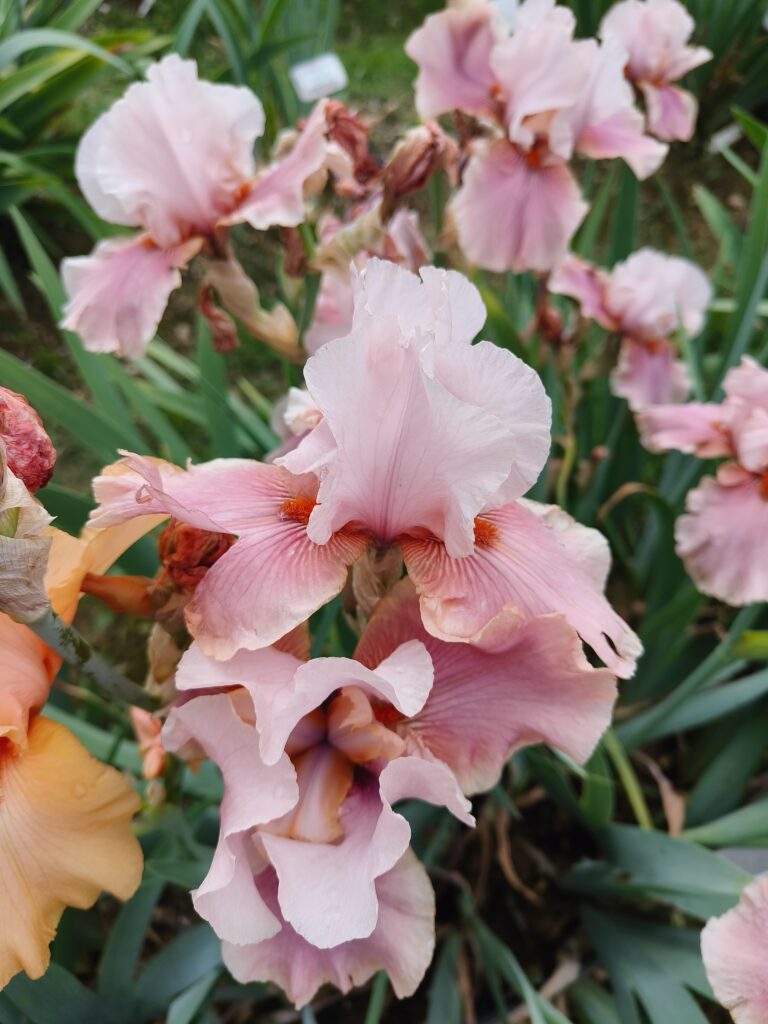
After falling in love with Cedric Morris’ irises – they’ve become a particular favourite of mine – I was very excited our trip coincided with the Florence Iris Festival. The iris is the symbol of Florence, either because Iris florentina flowers grew spontaneously around the city or the city was founded at the same time as Roman celebrations for their goddess Flora. Rising in the springtime, velvet tongues unravel themselves, pollen leaks from their lips; this was a celebration of the rich diversity of irises. Started by three women, Contessa Mary Senni, Nita Stross and Flaminia Gorretti Specht back in 1957, it has since been an international competition of Tall Bearded and Border Bearded Irises.
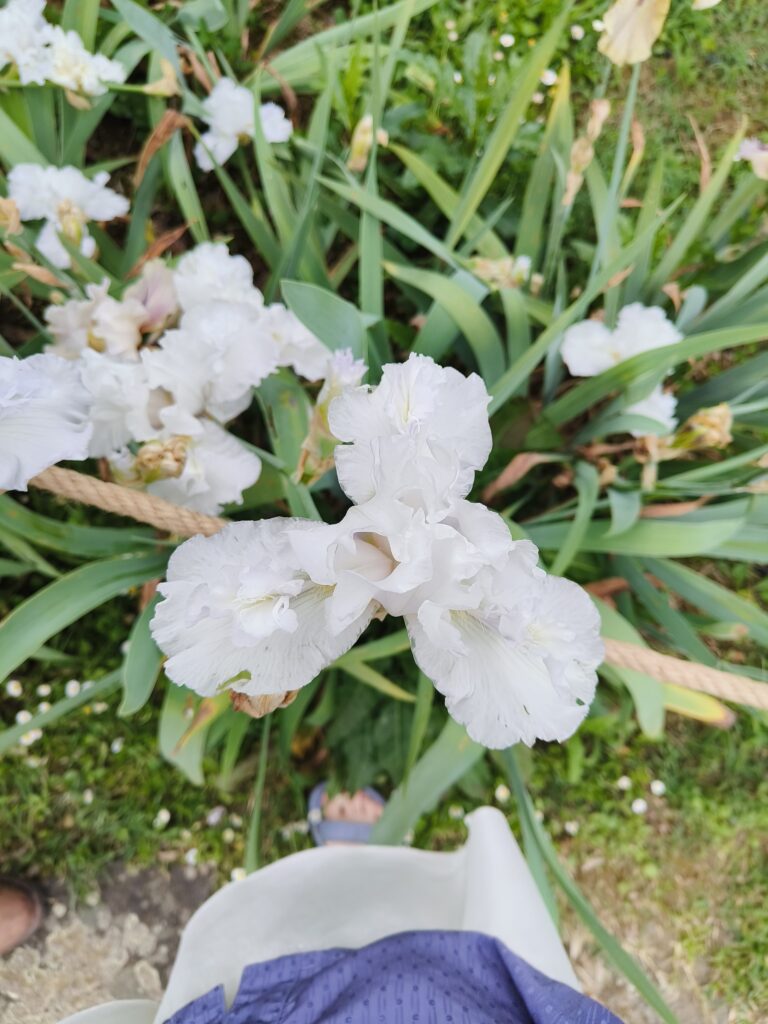
I was expecting neat rows of irises in a formal arrangement, but the garden, a former rubbish heap, sat in a wild and rich olive grove upon a hillside looking out to the Tuscan Valley. Irises rose up more in clusters than rows growing among wild grasses and flowers which clambered down the rocky side. The garden built on years of competitions is becoming an archive of silky purples, pinks, bronzes, blues, whites, all dissolving time on this hillside.
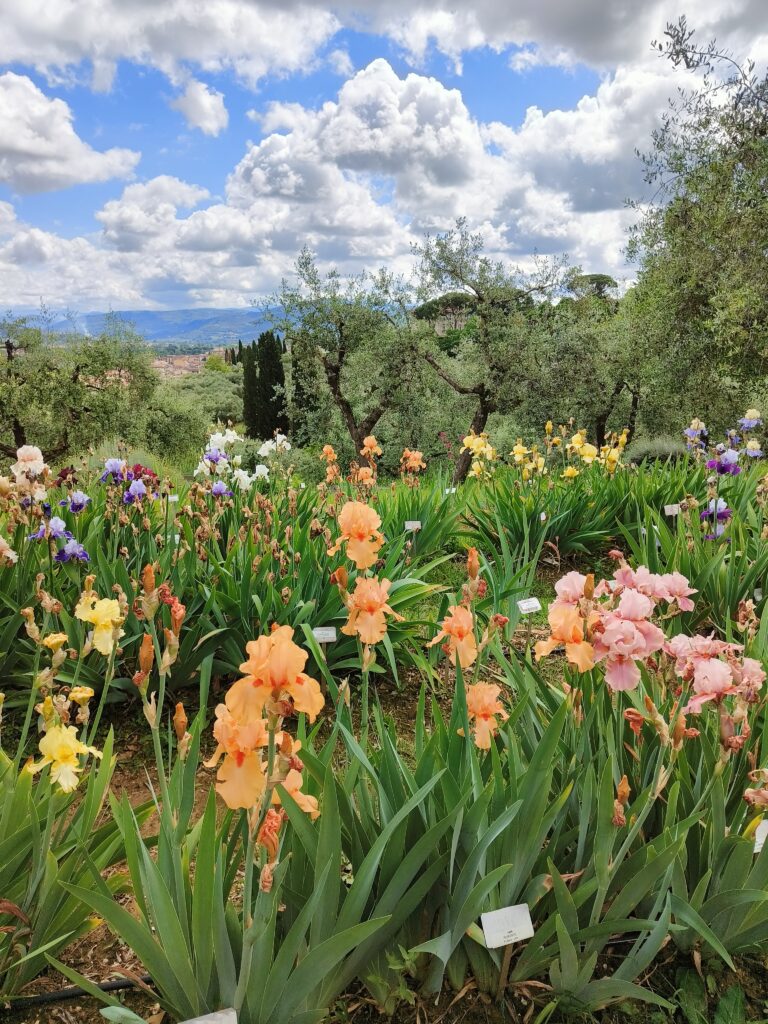
We watched as the judges inspected this year’s entries, but were soon distracted by the flurry of butterflies, bees, and beetles slipping into the irises. Grasses are intentionally left for precisely this wildlife and this same care is poured into looking after these cultivars for decades to come. It’s a fleeting moment, a short window where soon the irises will wither away, but has permanently transformed a wasteland pressed up right to the city into a garden full of so much wild beauty.
Following the scent of flowers, we found ourselves in Boboli Gardens, where a statue of Pegasus soars up from long wild grasses. Although formal in arrangement, the meadows have been intentionally left long, and waiting in the soil are 2,300 wild orchids ready to bloom. This is not a new biodiversity policy as orchids have been found in Boboli since 1716 and have been documented and studied. Contrary to my imagination of Italian strict geometries and mown lawns, the gardens are full of so much unexpected life and unusual combinations; roses and cactuses form an unlikely love affair, entangling together out of wild grasses and euphorbias.
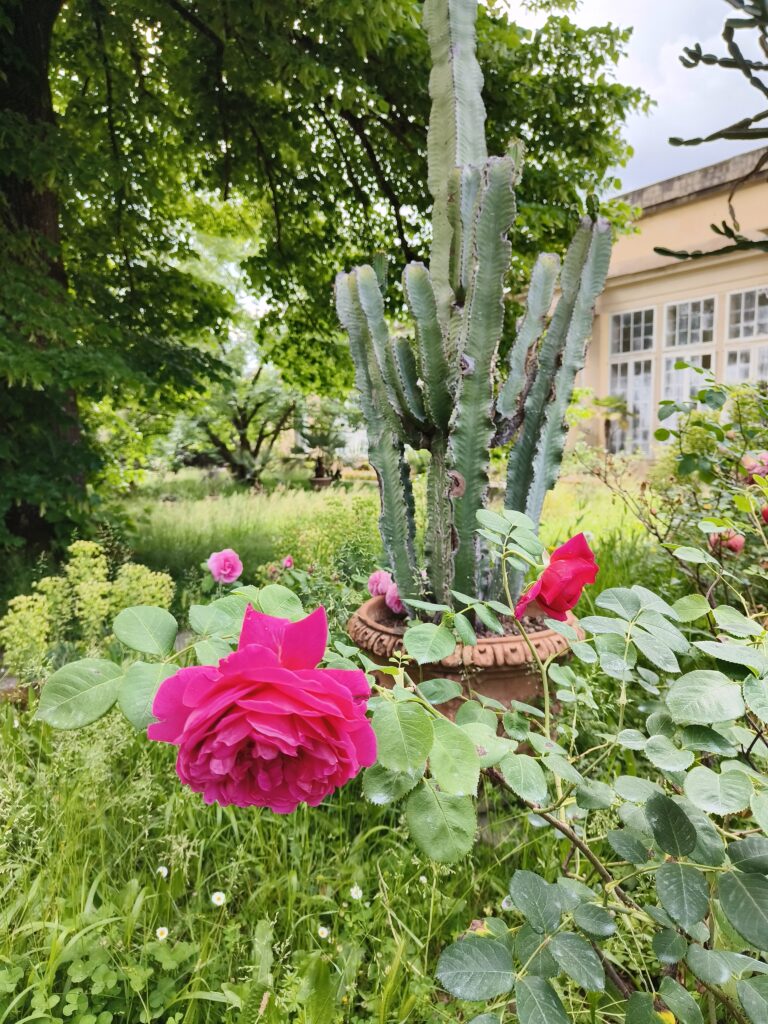
For what we had imagined as a series of destinations, places to tick off lined up in our shared google doc itinerary, became twisting lanes of google map voice commands we couldn’t understand. In the supermarket self-service, we ended up buying a bus ticket when we thought we were purchasing an artichoke. We began to abandon busy galleries for ice-cream in the rain and to turn down the wrong cobbled lanes wherever it would take us. It was at the foot, rather than the top, of the steps to the view which mesmerised us, where we saw baby ducklings frolicking in a fountain. Their fluffy curious bodies bobbed and played beneath the crystal views of Florence. When we cycled back in the evening to our room we were startled by the hoot of a tawny owl calling for its lover in the dark- the unexpected chance encounter with the wildness of the city.
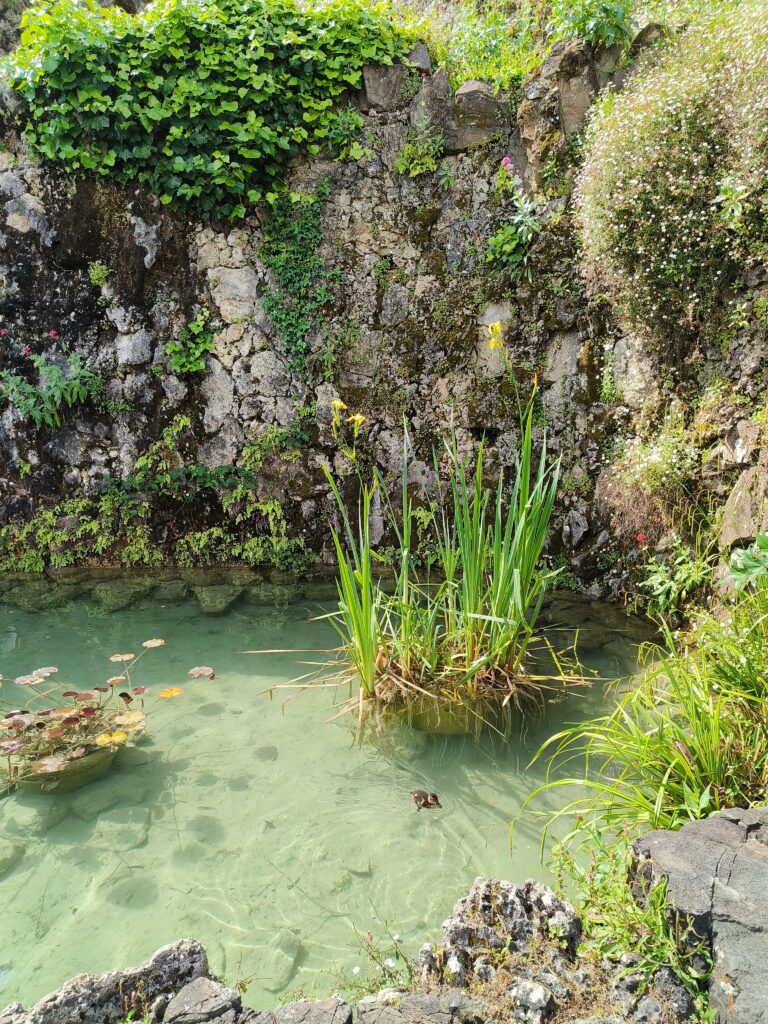
Back in the queue to the Uffuzi gallery, I read aloud Joan Didion to my partner, her razor sharp examinations cut to the heart of the matter. We also soon had ourselves and our belongings x-rayed as we piled into security, our insides turned out, exposed and under examination. Along several corridors and up marble stairs we made it up to see what really is some of the best art in history. We hear a cacophony of different languages pouring out through the audio guide as our bodies streamed along paintings like on a rapid river ride, stealing moments to glance at smooth tempera washed over canvas. On some moments we try to turn against the tide and stumble to the front of divine portraits and collect symbols and stories in the constant turn to try to make sense of it all.
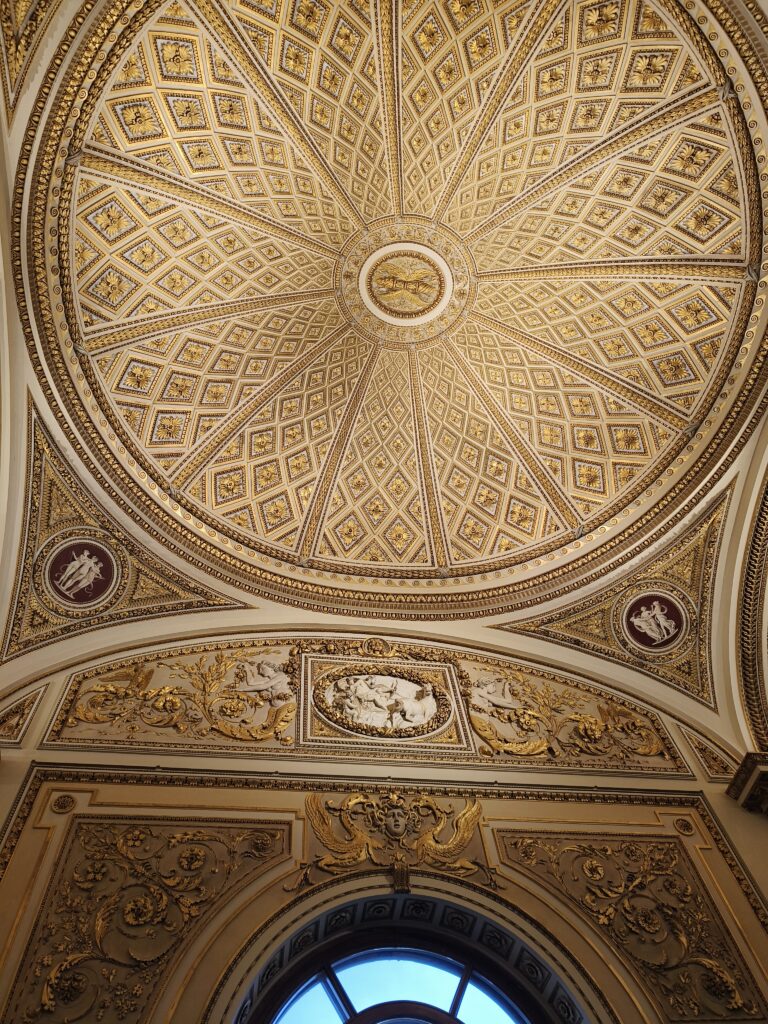
Out the other end, we landed in the splash pool of the plaza, transformed and tired, but not sure how. We grabbed pizza and I felt the inevitable churning of the cramps of my period begin, the hot blood needing to be contained, not to redden, and certainly not in public. It was then that we decided to see Tracy Emin’s show Sex and Solitude at Palazzo Strozzi and for the first time that day I felt in my body. The rooms were empty, just outstretched limbs sweating down the canvas, streaks of crimson red clotted between the frame, and unwashable stains pressed up right next to the marble.
Emin’s pink neons lit up entire rooms while the bodies in the paintings felt us far beyond the walls. They did not shy away from love or hurt, each line like our bodies held a thousand stories. Emin’s strokes, sculpture, embroidery, film, and photography rose out of different moments of her career, but here in this aristocratic palazzi she is also speaking to histories Renaissance art, painted with the male gaze. Blood becomes not something divine but rooted in the everyday experience of people who menstruate. Her red marks and poetry understand and give voice to the fluid and complicated bodies we live and feel in. She turns herself out and the trauma she experienced can now set flight out of the frame.
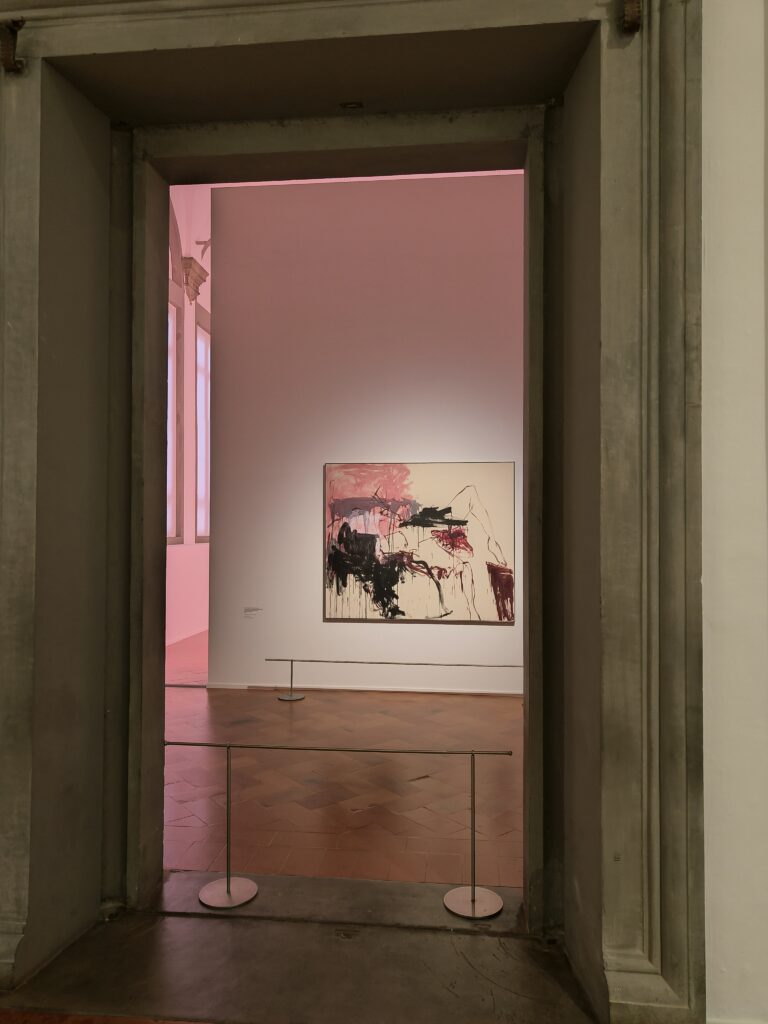
As birds start to fly home across the setting sky, we decide to take a detour cycling on the unlit side of the river, my body still in full bleed. Ahead of us I see a thousand butter lights dancing about on the grass. Fireflies. All greeting, meeting and mating with each other in the shadows of the city. I’d never seen them before and something small collapses in me, and I reach towards a flight I’ve been missing.
Each time I lay my head down in Florence I still woke up with a start. The pillows reverberating again. In the sweet hot dead of night I imagined they were the beating of Angel’s wings coming to visit us and felt myself fall into their feathery embrace. In my dreams I started flying again- a dream I’ve not had since childhood- I soar in my body across oceans- something must have made me so weightless. What the fleeting moment of a thousand fireflies or paint slipping down to canvas and down my legs reminded me of is the immense importance of feeling and embracing the chaos which flutters around us.
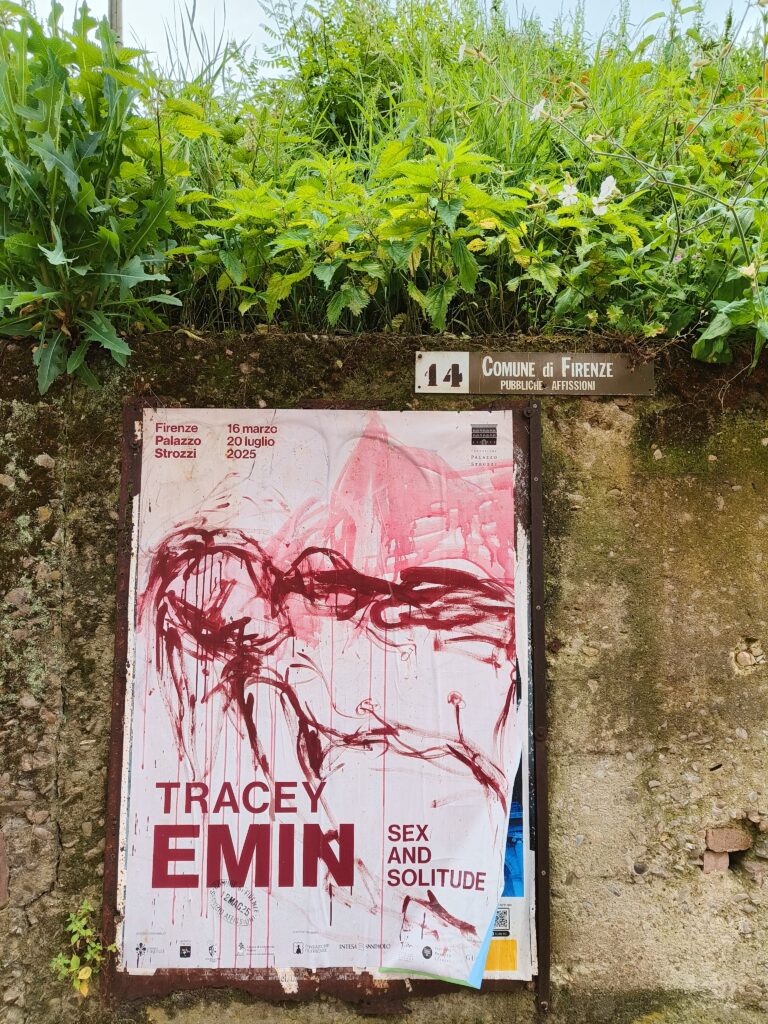
When it was morning we’d compare mosquito bites which had been drawn to our blood, and I was reminded of Emmanuele Coccia’s Philosophy of the Home, where he argues for interspecies living, to open up our windows wide to the world and let ourselves be transformed by it. In giving my blood to the mosquito I was contributing to this ecosystem, like Emin was giving her bloodied pain to our paintings, like Renaissance artists were giving meaning to the blood of Christ. The city of Florence has made us porous and more fluid, a bringing home of the forest and the river right to our pillowy heads.
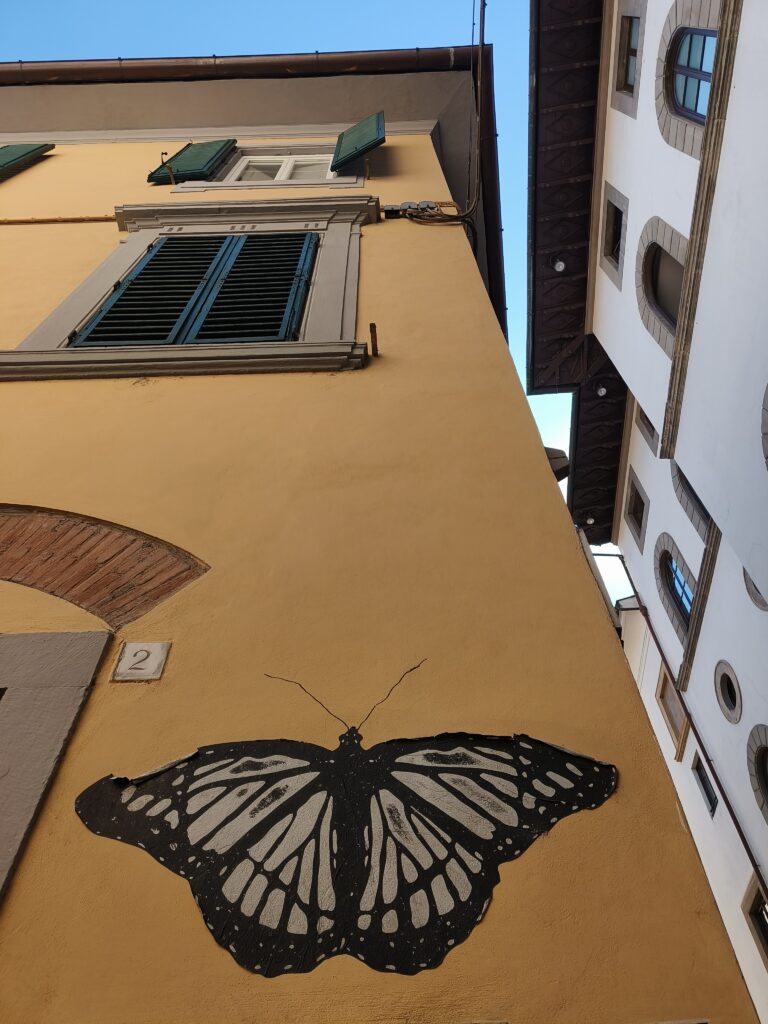
Follow Mattie on Instagram: @mattie.ocallaghan
